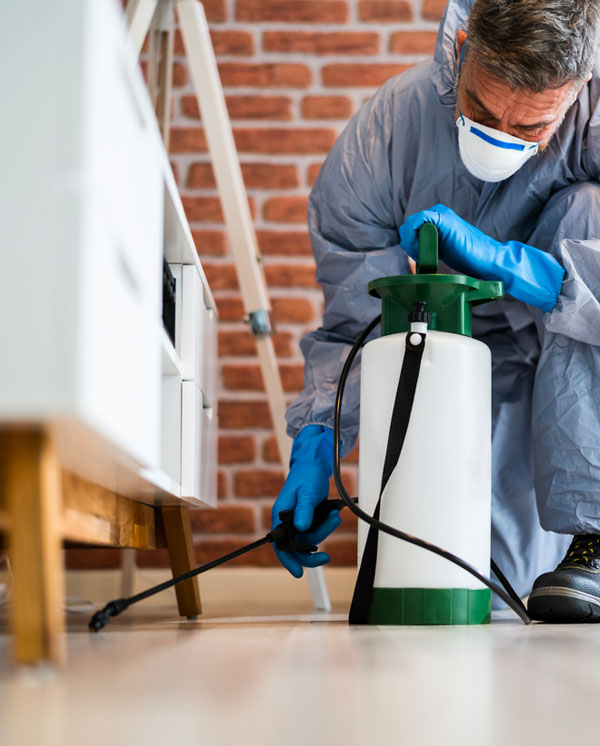Global warming is fundamentally transforming our environment, and its effects are becoming increasingly evident in various aspects of our existence. One major result of these changes in climate is the influence on pest populations, which can present challenges for property owners and businesses alike. As temperatures rise and weather patterns become more unpredictable, pests are adapting and changing their behaviors, resulting in more common infestations in our houses and neighborhoods.
Understanding the effect of climate change on pest control is essential for creating successful strategies to keep our living spaces pest-free all the seasons. From spring pests to winter rodent problems, being cognizant of how climate fluctuations affect pest behavior can empower us to take preventive measures. This article will explore typical household pests, the importance of professional pest control, and realistic tips for maintaining a pest-free environment in each season. Let's explore the critical information you require to safeguard your home and family against these tenacious intruders.
Grasping Insect Behavior and Climate Shifts
Shifts in climate is changing environments throughout the globe, and insect populations are not excluded. Increasing temperatures and altering weather trends are establishing more conducive conditions for many frequent household pests. For example, warmer winters enable insects like bed bugs and German roaches to survive and reproduce in areas where they previously faced challenges to establish a presence. As the climate persists to warm, pests may migrate into different regions, carrying with them a number of issues for bug regulation.
Moreover, greater precipitation and humidity can amplify the risks posed by pests. Mold and mildew flourish in damp conditions, often luring insects such as cockroaches and termites that can create significant harm to properties and buildings. Homeowners must be diligent in noticing these environmental changes, as they directly contribute to the increase of pests. Realizing this link between weather and pest behavior is vital for successful pest management tactics.
Finally, the effect of climate change on pests can also create new difficulties in controlling their numbers. Classic pest control practices may turn less effective as pests adjust to different conditions. For instance, DIY pest control solutions may fall short as pests gain resistance to certain treatments. It’s important for property owners to keep abreast about the evolving pest situation and evaluate more all-encompassing approaches, including routine professional pest control assistance, to maintain their houses pest-free year-round.
Successful Pest Management Solutions Methods
To efficiently control pest populations in your home, it is important to implement a combination of preventative tactics, surveillance, and treatment strategies. Begin by ensuring that your home is properly sealed. This includes examining for cracks in walls, openings around doors and windows, and blocking any openings where pests can access. Keeping a hygienic living environment is also crucial; frequently cleaning your kitchen and dining areas reduces food sources that lure pests. Additionally, eliminating standing water can aid mitigate many pest issues, especially mosquitoes.
Regular inspections perform a crucial role in the early identification of pest problems. By keeping an eye on areas where pests are likely to invade, such as basements, attics, and crawl spaces, you can recognize potential infestations before they grow. Scheduling professional pest control services regularly can further enhance your home’s barriers. These specialists have the expertise and tools needed to diagnose various pests and implement effective control methods that are safe and eco-friendly.
When it comes to addressing existing infestations, it is important to choose the appropriate approach based on the type of pest and the severity of the problem. For instance, some household pests such as ants and roaches may react favorably to baiting systems, while others like bed bugs might call for more comprehensive treatment plans. Always comply with the guidelines for use and safety, especially when applying chemical treatments. By integrating these strategies, you can formulate a robust pest management plan that keeps your home pest-free year-round.

Proactive Actions for Year-Round Pest Control
To keep a pest-free environment all year year, adopting preventive measures is essential. Begin by sealing any cracks and crevices in your home’s exterior, as these gaps serve as entry points for various pests. Verify that windows and doors fit well and place weather stripping if required. Regularly inspect your home for traces of pests and tackle any infestations promptly to prevent more problems.
Additionally, keeping clean indoor and outdoor spaces can substantially reduce the likelihood of pest invasions. Keep food stored in airtight containers and quickly clean up spills and crumbs. Outdoor areas should be kept orderly, with debris and standing water cleared, as these lure pests like mosquitoes and rodents. Proper waste management also plays a critical role, so confirm trash bins are sealed and emptied regularly.
Lastly, think about scheduling regular pest inspections with a professional pest control service. These inspections can detect potential issues before they escalate, offering peace of mind and making sure that your home remains protected year-round. With Ant Control Queen Creek and proactive measures, you can effectively manage pest populations and safeguard your living space.
